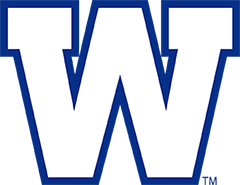Aeration
Let Your Yard Breathe
One of the keys to maintaining a lush, green lawn is core aeration. The process loosens compacted soil and reduces unhealthy thatch buildup, which stops nutrients, water and air from reaching the root structure. By aerating your lawn, you’re helping to open the earth and allow fertilizers and weed control solutions to truly work for your lawn.
Aeration gets to the root of your lawn problems
What is core aeration?
Aeration is the process of making finger-sized holes in your lawn and depositing the removed material on the surface to break down. This reduces compaction, extends the life of your lawn, and allows fertilizer, water, and oxygen to get to the roots where they are needed most.
How do I know if I need an aeration?
All soil in Winnipeg is clay based. Clay based soils, heavy traffic, more than one inch of thatch, standing water after a rainfall, or lawns that brown easily in heat should be aerated regularly. Aeration should be part of your regular cultural practices if you wish to maintain and encourage a healthy lawn.
When should I aerate?
Aeration should be performed in spring or early summer for best results. This helps the lawn to develop more extensive roots before the summer heat and stresses in July and August. This will also help the lawn to take fuller advantage of any rain that does fall in these months. Aeration should never be done during the months of July or August.
How often should I aerate?
Manitoba lawns have high clay content. As a result, compaction and thatch build up is more of a problem. Aeration should be performed once each year to maintain healthy turf.
When will I see visual results of the aeration?
This depends on the condition of your lawn. Your visual results may or may not be immediate from a single aeration. Subterranean root growth and overall health and stress tolerance will however begin to improve almost at once. Even in the toughest conditions aeration in combination with an effective fertilizer and weed control program will show dramatic visual results in the second year after a second aeration.
Will aeration make my grass grow faster?
Yes. Healthy grass will grow faster and thicker. If you hate to mow lush green grass, aeration, fertilizing and watering are counterproductive.
Is aeration a one-time fix that can be discontinued when my lawn has improved?
No. Aeration needs to be a continual part of your lawn care plan just like fertilizing, weed and pest control, irrigation and mowing. In some cases aeration can be reduced from once a year to once every two years.
How deep and how many cores are required for effective aeration?
Generally, cores every 4″-6″ and from 2″ deep will give best results. It is commonly accepted that the deeper and closer together the better. The cores left in the yard will usually be about 5/8″ diameter. Penetration depends on soil type, soil moisture, tine diameter, and the weight and power of the aerator. Clay soils are more difficult to penetrate.
How long will it take for the plugs left on my lawn to disappear?
The plugs will break down and dissolve within about two weeks, depending on the weather, soil conditions, watering, and mowing frequency. This process will add nutrients to the lawn. Raking up the cores reduces aeration effectiveness.
Should I aerate during times of drought?
No. During this time, the grass growth is less active and aeration could increase the invasion of weeds and possibly increase the rate of water evaporation.
Can aerator tines damage sprinkler heads or other items in the lawn?
Yes. The aerator weighs 200lbs. or more. You must flag all items in the yard to avoid damage that the tines could cause by a direct impact.
Should the lawn be aerated before it gets fertilized?
Aeration will maximize the potential of every fertilizer and weed control application throughout the year and into next year as well. Your spring application of fertilizer is very high in Nitrogen and will already be providing your lawn with the most impressive green-up possible. However, the spring application of fertilizer contains very little Potassium. Potassium is a nutrient that specifically encourages root growth. Your summer fertilizer treatments will contain slightly higher levels of this nutrient, therefore, it is more important that your summer treatments follow the aeration in order to assist those root building nutrients to more easily reach the roots.
Will my lawn require more fertilization after aeration?
No. The same amount of fertilizer will give quicker and more long lasting results as it will get to the roots where real health occurs. Should I water after aeration? Yes. Water helps to break down the cores left in the yard and is particularly effective on the newly exposed root system.















